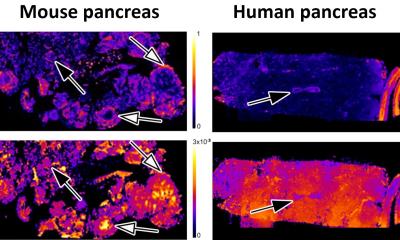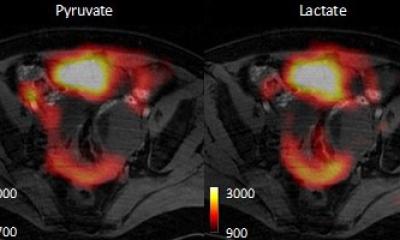Image source: Adobe Stock/SciePro
News • Appeal for imaging improvements
Study reveals alarming failures in pancreatic cancer detection
Pancreatic cancer tumours are being missed on CT and MRI scans, narrowing the window for life-saving curative surgery, research presented at UEG Week 2022 has revealed.
The study analysed post-imaging pancreatic cancer (PIPC) cases, where a patient undergoes imaging that fails to diagnose pancreatic cancer but is then later diagnosed with the disease. Results revealed over a third (36%) of PIPC cases were potentially avoidable, demonstrating a poor detection rate for a cancer that has alarming patient outcomes.
It is vital that patients are diagnosed with the disease as early as possible to give them the best chance of survival
Nosheen Umar
UK researchers studied the records of 600 patients diagnosed with pancreatic cancer between 2016 and 2021. Of those, 46 (7.7%) patients failed to have their cancer diagnosed through their first scan, but then received a pancreatic cancer diagnosis between 3 and 18 months later. CT and MRI images were independently reviewed by radiologists to develop an algorithm to categorise the missed cases and identify the most likely explanation for why they were missed.
Dr Nosheen Umar, the lead author of the study, from the University of Birmingham, UK, commented, “There is often only a very short period for curative surgery in pancreatic cancer meaning it is vital that patients are diagnosed with the disease as early as possible to give them the best chance of survival. The study found that evidence of pancreatic cancer was initially missed in over a third of patients with post imaging pancreatic cancers, which is a huge window of lost opportunity.”
In almost half (48%) of PIPC patients examined, there were signs of cancer that had been missed when scans were reviewed by a specialist hepatobiliary radiologist. In 28% of PIPC patients, imaging signs associated with pancreatic cancer, such as dilated bile or pancreatic ducts, were not recognised and investigated further. “We hope this study will raise awareness of the issue of post imaging pancreatic cancer and common reasons why pancreatic cancer can be initially missed”, explained Dr Umar. “This will help to standardise future studies of this issue and guide quality improvements efforts, so we can increase the likelihood of an early diagnosis of pancreatic cancer, increase the chances of patient survival and, ultimately, save lives.”
Responsible for 95,000 deaths in the EU every year, pancreatic cancer has the lowest survival rate of all cancers in Europe and life expectancy at the time of diagnosis is just 4.6 months. By 2035, the number of cases of pancreatic cancer is predicted to rise by almost 40%. Many patients are diagnosed at a late stage because the disease often presents vague early symptoms, making early recognition challenging. Symptoms can include jaundice, abdominal and back pain, unexplained weight loss and nausea.4 The complex nature of the disease also makes screening for early diagnosis challenging to implement.
Source: United European Gastroenterology
12.10.2022











